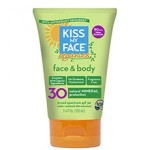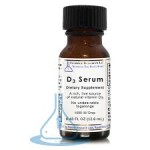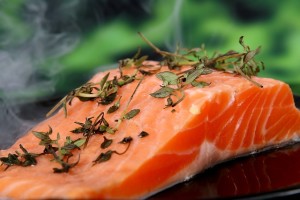Sunbathing for Vitamin D
Recipe Key
Did you know that more than 50% of the adults in the United States are deficient in Vitamin D? It is so important to our health many doctors now order a Vitamin D blood test routinely. This amazing vitamin helps prevent osteoporosis, depression, cancer, diabetes, obesity, Alzheimer’s and more. Vitamin D also fights infections, colds and the flu, because it influences your immune system to attack and destroy bacteria and viruses.
Vitamin D is one of the simplest solutions
to a wide range of health problems
Vitamin D deficiency can show up as tiredness or general aches and pains. More severe symptoms can be frequent infections, pains in your bones and overall weakness. It is important have your blood levels tested to determine your vitamin D levels.
When it comes to vitamin D, you want to be in the “optimal” range which is somewhere between 50 and 80 ng/ml all year long.
Sunshine is the best way to optimize your Vitamin D levels.
Our bodies make Vitamin D by converting sunshine into chemicals that are used by the body. The cholesterol in our skin converts “previtamin D” into usable vitamin D3 and then converts it to a biologically active and usable substance called calcitriol the bioactive form of Vitamin D. This is a steroid hormone that impacts our skeletal structure and also our blood pressure, immunity, mood, brain function, and ability to protect ourselves from cancer. (resource)
Tips to Optimize Vitamin D From The Sun
Now that summer is here you can go outside to replenish your vitamin D. Your skin makes Vitamin D when coming in contact with the ultraviolet B (UVB) rays from the sun.
Sit Outside
You CANNOT make any vitamin D when you’re exposed to sunlight through glass since glass filters out most of the UVB that stimulates vitamin D production. All you’re mostly getting are UVA rays, which penetrate deeply into your skin, causing wrinkling, and increasing your risk of skin damage and skin cancer.
Sunbathe In Midday
The latest scientific research shows going out in the mid-day sun is good for you. According to Dr. MIchael Holick, a leading authority on vitamin D, you cannot make vitamin D until about 10:00 in the morning or after 3:00 in the afternoon.
The only time get the UVB rays are during the mid-day hours.
The early morning and afternoon sun have more UVA rays that damage your skin.
Aim to spend 10-30 minutes in the sun daily
If you are fair skinned start slowly (5 minutes)to allow your body’s melanocyte cells to get adjusted. Your goal is to get the UVB rays but never get sunburnt.
Some experts recommend that people with darker skin spend about 40 minutes to one hour in the sun daily. If you live farther from the equator, above the mid-states in the US, then you will need more time (up to an hour) in the sun for Vitamin D production. In the winter you need to double that.
Leave Off The Sunscreen For 15 – 30 Minutes
In order to make Vitamin D from the sun your skin must be exposed. Sunscreen blocks the UVB vitamin D-making rays.
To get adequate vitamin D3 from the sun we need direct mid-day sun 3-4 times a week for 15-30 minutes without sunscreen
After 10-30 minutes of “sunbathing for Vitamin D” apply a safe sunscreen to prevent sunburn.
 Avoid sunscreens with oxybenzone which is a hormone disrupter or retinyl palmitate, a form of vitamin A, which has been shown to speed the development of skin tumors when exposed to the sun. Choose mineral based sunscreens with ingredients like zinc oxide or titanium dioxide, which create a physical barrier to protect the skin from the sun. Click here for EWG list of safe sunscreens.
Avoid sunscreens with oxybenzone which is a hormone disrupter or retinyl palmitate, a form of vitamin A, which has been shown to speed the development of skin tumors when exposed to the sun. Choose mineral based sunscreens with ingredients like zinc oxide or titanium dioxide, which create a physical barrier to protect the skin from the sun. Click here for EWG list of safe sunscreens.
If you are worried about not wearing sunscreen then apply sunscreen to your face but not on your body. Expose as much skin as possible to create the Vitamin D you need. How about sunbathing naked?
Stay Out Of The Water For 1 Hour
If you take a shower or swim within an hour of getting your rays you wash off the pre-vitamin D3 that sets up on your skin. The UVB rays react with the natural oils on the skin to make pre-vitamin D3, and then begin to absorb into the blood stream – where it becomes active vitamin D3 in the liver and kidneys.
Best Foods for Vitamin D
While exposure to sunlight is still the very best way to get the Vitamin D you need, adding in foods rich in Vitamin D will help keep your levels up especially in winter. Add good-quality, natural sources of these foods into your diet regularly.
-
Cod Liver Oil – 1 tablespoon: 1360 IU
-
Halibut – 3 0z. filet: 932 IU
-
Mackerel – 1 piece: 805 IU
-
Eel – 3 oz.: 792 IU
-
Maitake Mushrooms* – 1 cup sliced: 786 IU
-
Salmon – 3 oz. filet: 730 IU (or 1 3 oz. can has 718 IU)
-
Portabella Mushrooms* – 1 cup sliced: 634 IU
-
Swordfish – 3 oz. filet: 556 IU
-
Rainbow Trout – 3 oz. filet: 539 IU
-
Sardines – 1 can (3.75 oz): 178 IU
-
Tuna – 1 can (3 oz.) packed in water: 148 IU
-
Beef Liver 3 oz. – 42 IU
-
Eggs – 1 large whole egg: 41 IU
*Mushrooms exposed to sunlight when growing, or before eating, provide more vitamin D
Supplements
In modern society most adults work indoors, exercise inside gyms, and spend their free time inside their homes where they are sheltered from the sun. We have not yet adapted to handling a long winter without the sun’s UVB radiation, and we have not figured out how to genetically adapt to a life indoors. Until we do, we need to add supplements. There is little risk in over-supplementing with Vitamin D, but many benefits from having adequate levels.
It is a good idea to have your vitamin D levels tested from time to time to make sure you’re maintaining optimal levels year-round.
When your doctor performs a Vitamin D test, specify you would like to have the 25-hydroxoyvitamin D test done.
You can order your own vitamin D blood test from Life Extension or test your levels from a drop of dried blood at The Vitamin D Council.
According to the Vitamin D Council, we should maintain a vitamin D3 level between 50-80ng/mL all year long. To accomplish this the average adult needs about 4,000-5,000 IU/day in the winter and 1,000-3,000 IU/day in the summer. The summer dose depends on how much summer sun you get.
Before taking any supplements check with your doctor.
The best type of Vitamin D supplement is D3.
Unfortunately, most Vitamin-D-fortified foods and dietary supplements are Vitamin D2, which is not able to be converted efficiently to be used for body functions.
D3 from animal products is closest to what sunlight naturally produces in humans when the skin works to convert UV light.
 What I recommend to my clients and take myself is Premier Research Labs D3 Serum. Take your supplement with your biggest meal. Since Vitamin D is fat soluble, this should be the meal with the most fat in it.
What I recommend to my clients and take myself is Premier Research Labs D3 Serum. Take your supplement with your biggest meal. Since Vitamin D is fat soluble, this should be the meal with the most fat in it.
I hope to enjoy the sun the summer and get plenty of vitamin D. It’s time to go out and have some fun.
Let me know what you think of this article, leave a comment below. Some of the information is very different than what we have been lead to believe.
Much love,
Ingrid



